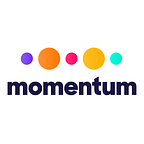Data-driven decisions with powerful, predictive customer analytics
Businesses have always relied on the conventional way of reaching out to customers. These traditional methods include the distribution of flyers, billboards, TV and Radio ads, and many others. While these approaches are beneficial in some ways, the truth is that they have lost their efficiency.
This loss of efficiency is based on the businesses’ failure to answer an essential question before deploying these methods. Without answering this vital question, all marketing and advert efforts will yield very little, if any, results at all.
This question is none but “Who is my customer?”
Understanding your target audience is an essential process of any marketing strategy. It ensures that you deploy the right marketing method, at the right time, to the right audience. It ensures that you get value for every resource spent in the marketing effort. By understanding who your customer is, you get to understand why they want the things they want.
This knowledge will help you streamline your product and services to suit the needs of your customers. Having realized the benefit of understanding your customer, let’s examine how you can do this by utilizing data and analytical frameworks even before deploying marketing approaches.
Knowing Your Customers;
For many years, most businesses rely on intuition to determine their customers and what they want. However, a new approach could be of immense benefit to businesses in the area of customer acquisition and maintenance. While this new approach is fast, effective, and cost-efficient, it doesn’t seek to eradicate the intuitive process. Rather, this new approach partners with the intuitive method to help businesses determine their target audience and keep them.
This new method is known as a data-driven and analytical method. It involves the acquisition of data and analyzing these data to determine your business’s target audience and how best to reach them. The approach involves three major processes that make up its framework. These processes include;
Data Wrangling
This process involves acquiring the data you need to use. You review the nature of the data and prepare it by removing extraneous dimensions and creating new dimensions for the data. You may also need to add new data if required. Lastly, you must identify the most appropriate valuation method that produces the best result you crave.
Data Analysis
At this stage, you need to check out for trends and patterns that could influence or give insights about the analysis. You also need to determine the best clustering approach that offers the best insights based on your data.
Data Output
This is the last stage, and it involves you segmenting your customers based on the result from your analysis. You also need to use the insights gained from the analysis carried out. Finally, you need to prepare for possible changes in the trends and patterns noticed in the data analysis carried out with the future in mind.
These are the three stages involved in the data-driven and analytical approach. Regardless of the business type or customer demography, these steps are applicable. The only variation is the valuation approach to be used.
